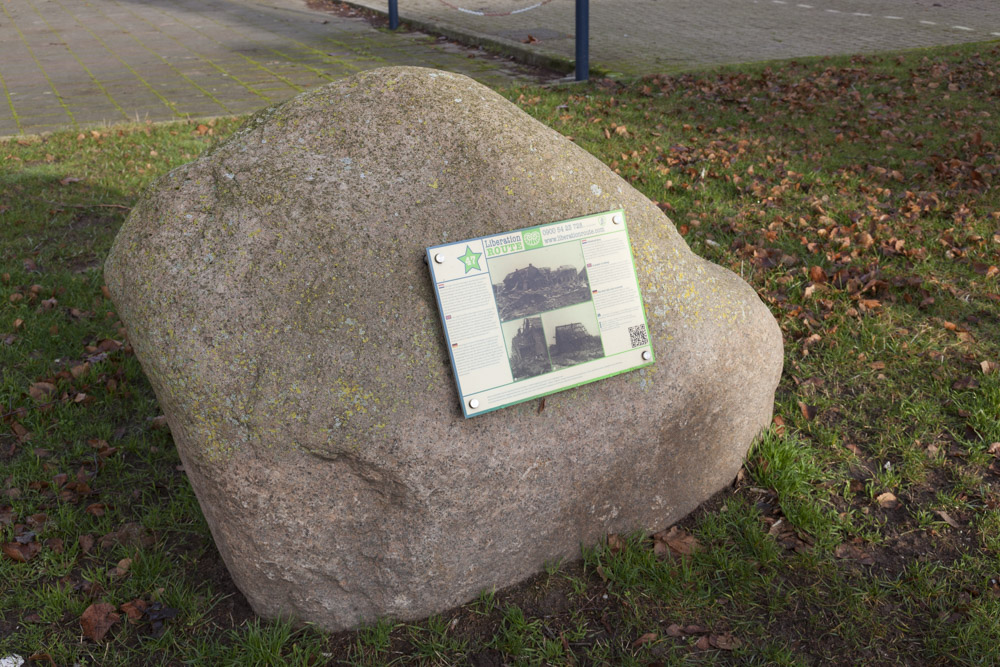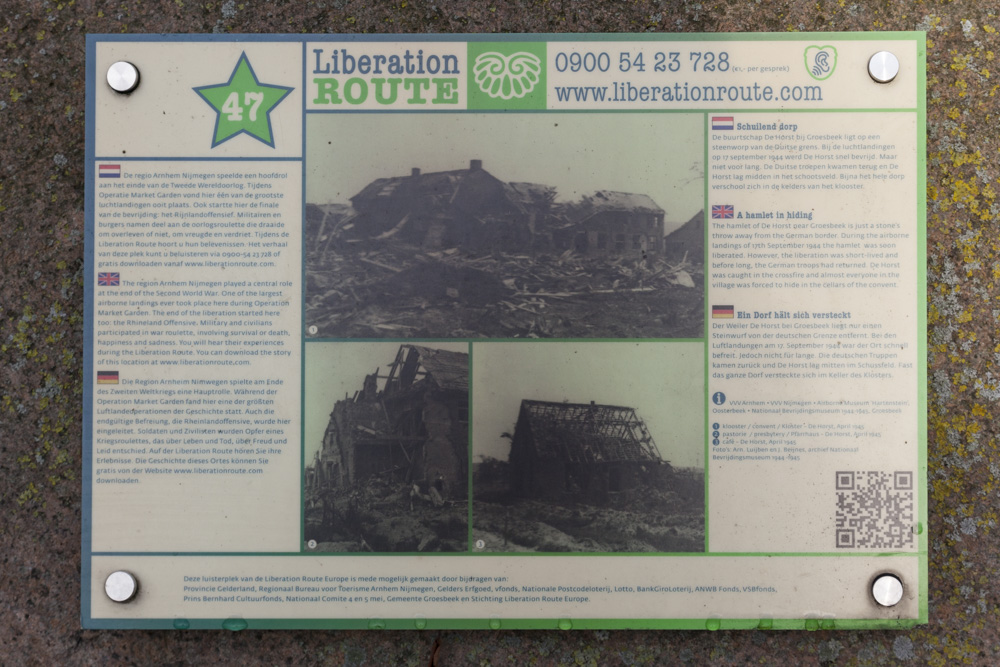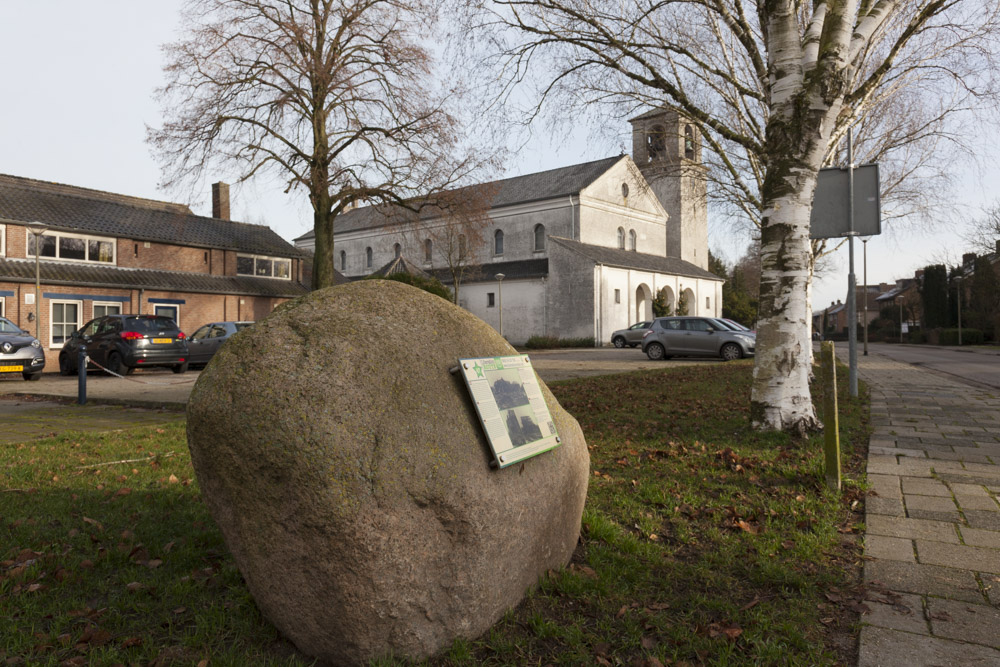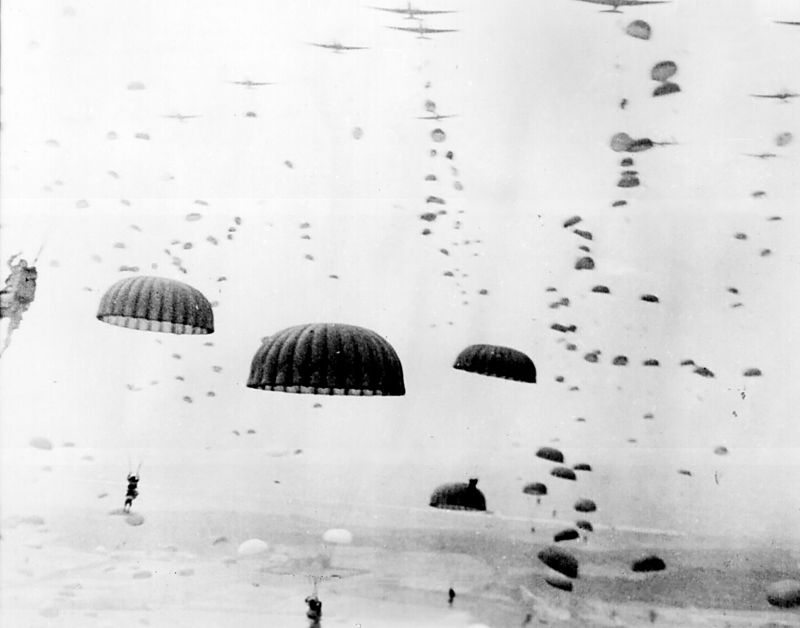Liberation Route Marker 047: A hamlet in hiding
A hamlet in hiding
The hamlet of De Horst near Groesbeek is just a stone's throw away from the German border. During the airborne landings of 17th September 1944 the hamlet was soon liberated. However, the liberation was short-lived and before long, the German troops had returned. De Horst was caught in the crossfire and almost everyone in the village was forced to hide in the cellars of the convent.
Operation Market Garden
At the time, the hamlet of De Horst consisted of only a few streets, some farms, a couple of shops and four pubs. It had a school, a church and a convent. During Operation Market Garden, on 17th September 1944, thousands of parachutists from the 82nd Airborne Division landed nearby. The people of De Horst thought they had been liberated, but the German troops were not gone for long. By 20th September, the frontline ran between De Horst and Groesbeek. De Horst was caught firmly in the allied line of fire, and the people, were stuck. The part of Groesbeek that had been liberated was close by, yet completely inaccessible.
Shelter and sanctuary
More than 400 people were taken in by the Franciscan nuns of the hamlet's convent. It was the building with the sturdiest cellars, but despite the white flag on the roof, the convent came under regular fire. The sisters tried to take care of the wounded as best they could and every night, Antoon Oomen, the baker, would bake dozens of loaves of bread for the hundreds of villagers sheltering in the convent. He did this free of charge, whilst his house was being shot at. Despite this, he kept on baking.
Evacuation
After a month, the situation in De Horst had become unbearable. The hamlet’s priest managed to negotiate an evacuation with the Germans and the villagers were free to leave: not to the liberated part of the country, but the other way. So off they went, on 20th October 1944, through Kranenburg and Emmerich into the occupied Achterhoek region. When in May 1945, the people of De Horst were finally allowed to return home, they found the hamlet in ruins.
Audiospot - A hamlet in hiding
Liberation Route Europe is a certified Cultural Route of the Council of Europe. With hundreds of sites and stories in nine European countries, the route links the main regions along the advance of the Allied Forces in 1943-1945.
The entire route consists of themed routes that can be travelled by by hiking, walking, cycling and car. These routes pass numerous historical and interesting sites and tell stories from a multitude of perspectives that were important in the final phase of World War II.
Many routes feature listening spots, offering the opportunity to listen to a historical story at a location. In addition, many ‘Vectors of Memory’ have been placed, indicating that the passer-by is on one of the Liberation Routes.
The routes can be found on the Liberation Route Europe website or in the app through which many stories can also be listened to.
Do you have more information about this location? Inform us!
Source
- Text: TracesOfWar & Liberation Route Europe
- Photos: Arjan Vrieze
Related books
Nearby
Museum
Point of interest
- Information Sign former Monestary Mariendaal Groesbeek - Groesbeek
- The South Mill Groesbeek - Groesbeek
- Villa Vogelsangh Groesbeek - Groesbeek
Monument
- Memorial for Dutch Soldiers De Horst - De Horst
- Memorial Sergeant Prager - Groesbeek
- Liberation Route Marker 093: Scene of a failed escape attempt - Kranenburg
Cemetery
- Dutch War Grave Roman Catholic Cemetery Breedeweg - Breedeweg (Groesbeek)
- Dutch War Graves Dutch Reformed Churchyard Groesbeek - Groesbeek
- German War Grave Kranenburg - Kranenburg
Remembrance Stone
- Stumbling Stone Rijksweg 128 - Mook
- Stumbling Stone Rijksweg 173 - Mook
- Stolpersteine De Hove 13 / 15 (former A 59) - Mook
Fortification
- Trenches on Pyramid Hill - Milsbeek
- Maas-line - Casemate 110S - Cuijk
- Maas-line - Casemate 112S - Katwijk (Cuijk)































